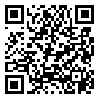Volume 12, Issue 2 (Iranian South Medical of Journal 2009)
Iran South Med J 2009, 12(2): 149-156 |
Back to browse issues page
Download citation:
BibTeX | RIS | EndNote | Medlars | ProCite | Reference Manager | RefWorks
Send citation to:



BibTeX | RIS | EndNote | Medlars | ProCite | Reference Manager | RefWorks
Send citation to:
Saberi fard J, Radmehr A. Review of frequency of abnormal imaging finding in magnetic resonance cholangiopancreatography. Iran South Med J 2009; 12 (2) :149-156
URL: http://ismj.bpums.ac.ir/article-1-184-en.html
URL: http://ismj.bpums.ac.ir/article-1-184-en.html
1- , jsaberifard@yahoo.com
Abstract: (15507 Views)
Background: Magnetic resonance cholangiopancreatography (MRCP) has had a significant technical improvement during recent years. This method of imaging can have a broad range of clinical applications in imaging of pancreatic and biliary ducts. Recent studies have shown that magnetic resonance cholangiopancreatography is a comparable and better technique than other techniques such as sonography, CT scan and endoscopic retrograde cholangiopancreatography to assess pancreaticobiliary system. Methods: In this study heavily T2 weighted MR sequence was used to show slow flowing fluid as high signal intensity in bile ducts and main pancreatic duct. We reviewed MRCP imaging findings of 293 patients with pancraticobiliary diseases and analyzed the frequency of different pathologies and disorders during the years 1379 to 1385. Results: We found that stones in adults and also congenital diseases of bile ducts such as choledochal cysts in children were the most frequent pancreaticobiliary problems depicted by MRCP. Conclusion: MRCP is a valuable tool for diagnostic imaging of pancreaticobiliary system and can elegantly show different pathologies noninvasively and accurately.
Keywords: cholangiopancreatography, magnetic resonance imaging cholangiopancreatography (MRCP), bile ducts, pancreas
Type of Study: Original |
Subject:
General
Received: 2008/07/28 | Accepted: 2009/10/17 | Published: 2009/12/12
Received: 2008/07/28 | Accepted: 2009/10/17 | Published: 2009/12/12
Send email to the article author
| Rights and Permissions | |
 |
This work is licensed under a Creative Commons Attribution-NonCommercial 4.0 International License. |





